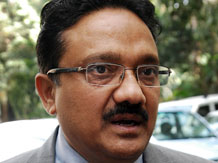Interview with Chairman, Coffee Board

After coffee producers in Brazil and Vietnam used mechanisation and genetically improved plants to increase crop yields, Indian coffee growers are trying to replicate their success. However, many allege the Indian government has not provided adequate incentives to increase crop yields or protect these from diseases such as the white stem borer. On the sidelines of the UPASI-KPA Coffee conference in Bangalore, Jawaid Akhtar , chairman of the Coffee Board , spoke to Antonita Madonna on these allegations and on the focus of the commerce ministry. Edited excerpts:
Growers allege, unlike their counterparts in Brazil, they have not been provided adequate incentives. How would the Coffee Board address that?
Brazil and India cannot be compared so easily. The methods used by them cannot be correlated with India’s, as the plantations in the two are very different. In Brazil, the higher crop yield is not as much the result of incentivisation as of the use of new varieties, new agronomical practices, etc. Production in India is increasing, but at a very slow pace due to several constraints. The drastic difference between the progress in India and in Vietnam and Brazil is because the soil is less conducive here. Vietnam and Brazil have volcanic soil. In India, coffee is not grown under direct sun, but under the cover of trees. So, productivity suffers, but quality increases.
Second, coffee growers have to show more dynamism. They have to put in more effort and use better inputs. What it requires is more water, more use of agrochemicals, etc. The Board is regularly working on research. We also disseminate the findings of these studies among growers. It is an ongoing programme.
What research and development is the Board doing?
We are working on finding new varieties that are high-yielding, pest- and drought-resistant.
Some three-four varieties are in the pipeline on the arabica side, as problems, including the white stem borer, are more prevalent in arabica. We had also introduced a variety of arabica coffee four years before. Robusta, on the other hand, is yielding in some places even after 80 years.
To replicate the success in Brazil here, growers have been seeking the Board’s help in research and tools. Is the Board working on that, too?
The mechanisation in Brazil cannot be correlated with that in India because in Brazil, there is no shade. Also, unlike the undulating terrain of the Western Ghats in India, the land in Brazil is plain.
The 20-ft high harvester they use in Brazil cannot be used in India, as coffee does not grow in the open here. Our plantations are different.
How is the Coffee Board encouraging more acreage for coffee?
We have seen production rising in non-traditional areas, but in traditional areas (Kerala, Karnataka and Tamil Nadu), it is not. Now, we have identified more areas where coffee production can be increased and are trying to include that in the 12th Plan.
With a depreciating rupee, is the board planning to increase exports?
There are schemes for exports already. But you can export more only if there is more production. We export 70 per cent of whatever is produced. But we offer incentives for areas to which much coffee doesn’t find its way, despite these being good markets for coffee. For instance, in the 11th Plan, we had five countries—the US, Canada, Australia, New Zealand and Japan. Now, in the next Plan, we will include other markets such as South Korea and two other countries. We are in discussions with other countries as well.
We are also trying to promote brand-building. So, we’ll give incentives to export value-added coffee in retail packs. The value-add maybe anything from roasting green beans or making instant coffee. Our instant coffee market is very robust. Almost all the value-added coffee that goes from India is instant coffee. Now, we’re the second-largest producer of instant coffee, after Brazil.
Any plan to introduce the Coffee Board’s own brands?
No, there is no such plan. All these plans were shelved 20 years ago and there are no plans to revive those. Now, it is a free market and we encourage private businesses. That is why we have introduced so many programmes to train manpower and tasters so that private people can run businesses.
Is the Coffee Board working on increasing awareness or building brand equity for Indian coffee?
We are, of course, working on positioning Indian coffee better in the international market. We participate in international trade fairs, advertise, get media coverage, arrange Indian coffee tasting sessions in international locations, invite roasters, make them taste Indian coffee, etc. All these efforts are already reaping rewards. Our average price of robusta is about 40 per cent higher than the international average. There is a very large international market for this premium Indian coffee.
source: http://www.business-standard.com / Business Standard / Home> Companies> Q & A / by Antonita Madonna / Bangalore – November 14th, 2013








